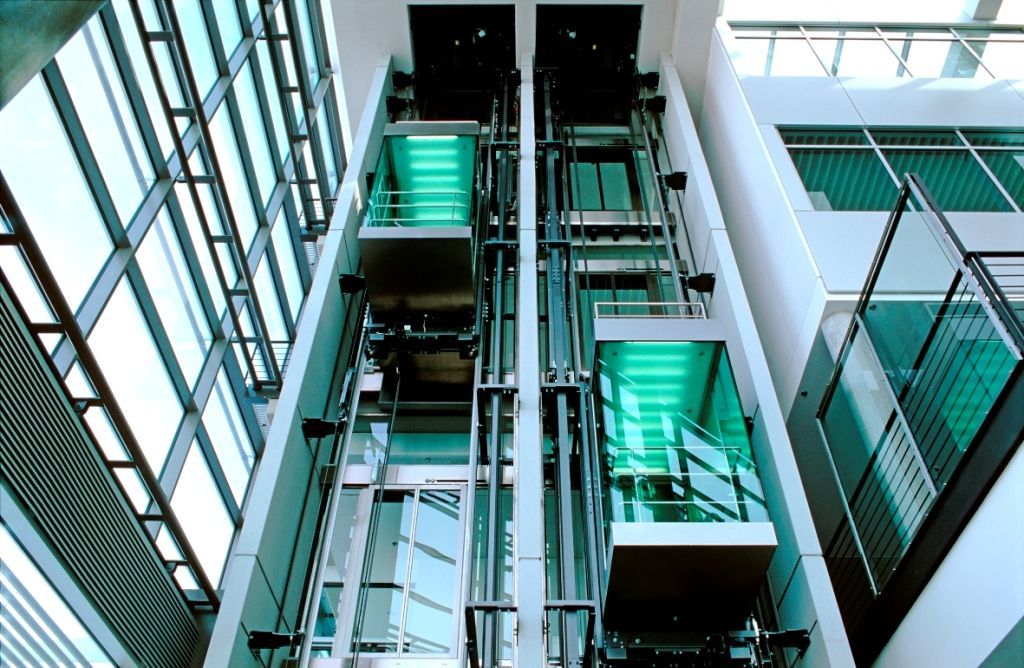
Elevator Market by Type (Passenger Elevator, Freight Elevator and Others), by Technology (Traction and Hydraulic), by Service (New Installation, Maintenance and Modernization), by Capacity (Less than 1500 kg, 1500 to 2500 kg, 2501 to 4000 kg and More than 4000 kg) by Speed (Less than 1 M/S, Between 1 to 4 M/S and More than 5 M/S), by Deck type (Single Deck and Double Deck), by Designation Control (Smart and Conventional), by Door Type (Automatic and Manual) and by Application (Residential, Commercial and Industrial) ¬¬– Global Opportunity Analysis and Industry Forecast, 2024 –2030
Industry: Construction & Manufacturing | Publish Date: 07-Mar-2024 | No of Pages: 483 | No. of Tables: 407 | No. of Figures: 382 | Format: PDF | Report Code : N/A
Market Definition
The global Elevator Market size was valued at USD 82.07 billion in 2023 and is predicted to reach USD 137.57 billion by 2030, with a CAGR of 6.6% from 2024 to 2030. The elevator market represents a dynamic sector encompassing the design, manufacturing, installation, and maintenance of elevator systems.
From conventional traction elevators to cutting-edge smart solutions, this market offers a diverse array of vertical transportation choices customized to suit the distinct requirements of various buildings and infrastructure projects.
Stakeholders within the elevator market include manufacturers, suppliers, contractors, architects, building owners, and facility managers. Manufacturers continuously innovate to enhance elevator performance, safety, and sustainability, while suppliers provide critical components and materials necessary for system construction.
Additionally, sustainability considerations, including energy efficiency and material recyclability, are increasingly integral to elevator design and operation. They align with broader environmental objectives and sustainable building practices. Thus, the elevator market is a cornerstone of vertical mobility as elevators enhance functionality, accessibility, and sustainability within buildings and urban landscapes worldwide.
Global Urbanization Increases the Demand for Elevators
The rapid pace of urbanization worldwide has significantly contributed to the growth of the elevator market. As cities expand to accommodate increasing population and address space constraints, the demand for efficient vertical transportation systems such as elevators has surged considerably.
High-rise buildings, skyscrapers, and mixed-use developments have become prevalent features of urban landscapes, necessitating the installation of elevators to facilitate movement within these structures.
Additionally, urbanization has led to denser populations in cities, resulting in greater foot traffic and a heightened need for elevator systems in residential, commercial, and public buildings. Elevator systems also ensure smooth and timely vertical mobility.
According to The UNCTAD Handbook of Statistics 2023, the proportion of urban inhabitants was estimated to have risen to 56.9% by 2022. This proportion tends to be higher in developed regions, reaching 79.7% in 2022, compared to developing countries, which stood at 52.3%.
Furthermore, urbanization trends are often accompanied by an increased focus on sustainability and energy efficiency. This led to the adoption of modern elevator technologies that offer energy-saving features and contribute to eco-friendly building designs.
Consequently, the growing urbanization worldwide continues to be a driving force behind the expansion of the elevator market, with manufacturers innovating to meet the evolving needs of urban environments.
The Expanding Construction Industry Raises the Demand for Elevators
The surge in building and construction activity is a primary catalyst behind the growing elevator market. As urbanization continues to reshape landscapes worldwide, the demand for vertical infrastructure such as high-rise buildings, skyscrapers, and mixed-use developments is escalating. This tendency is particularly evident in developing economies, in which rapid urbanization and population growth necessitate innovative solutions for accommodating dense urban populations.
In response, the construction industry is witnessing a surge in ambitious architectural projects that redefine city skylines and urban environments. Within these towering structures, elevators play a pivotal role as indispensable conduits of vertical mobility.
They efficiently transport occupants and goods between floors, ensuring seamless access to various amenities, residences, offices, and recreational spaces. Elevators enhance convenience and optimize space utilization within these tall structures.
They maximize the value of the vertical real estate. Furthermore, the rise of mixed-use developments highlights the versatile characteristics of elevators, seamlessly linking residential, commercial, and retail spaces within a unified complex.
This, in turn, enhances accessibility and functionality. As construction activity intensifies to meet the demands of urbanization, elevators emerge as vital components of modern infrastructure. This factor further drives the growth trajectory of the elevator market.
High Costs Associated with Elevator Installations, Maintenance, and Modernization Hinder the Market Growth
High costs associated with elevator installations, maintenance, and modernization are significant factors restraining the market growth. The initial investment required for installing elevator systems, especially in buildings not initially designed such infrastructure, can pose a considerable financial burden on building owners and developers.
Additionally, ongoing expenses related to maintenance contracts, including routine inspections and repairs, contribute to the overall cost of ownership. Furthermore, the need for modernization to comply with updated safety standards and improve energy efficiency adds to the financial strain.
These expenses may be particularly challenging for building owners in regions with limited financial resources or older buildings where retrofitting elevators is complex and costly. As a result, the high costs associated with elevators restrain the market expansion, impacting the growth prospects in various regions.
Introduction of AI-Powered Predictive Elevator Maintenance Creates Opportunity
Artificial Intelligence (AI)-powered predictive elevator maintenance presents a lucrative opportunity for the elevator industry. It leverages AI to revolutionize servicing and management practices. By analyzing data from elevator sensors, AI algorithms can proactively identify maintenance needs, minimizing downtime and maximizing elevator uptime. This approach extends the lifespan of elevator components, enhances safety by preventing unexpected breakdowns, and optimizes resource allocation.
This, in turn, leads to significant cost savings for elevator companies. Moreover, dependable and well-maintained elevators contribute to increased user satisfaction, thereby enhancing the overall experience for both building occupants and visitors. Embracing AI-powered predictive maintenance positions elevator companies to stay competitive and deliver superior service quality in a rapidly evolving elevator market landscape.
Asia Pacific Dominates Elevator industry, with the highest projected CAGR till 2030
The elevator market in the Asia-Pacific region is experiencing robust growth and is projected to maintain dominance throughout the forecast period. China leads this market, commanding over 50% of the market share. This dominance is driven by China's significant urban population, large economy, and status as the world's largest manufacturing economy.
According to the International Trade Administration, the 14th Five-Year Plan in China highlights the importance of new infrastructure projects focusing on transportation, energy, water systems, and new urbanization. It also stated that the total investment in new infrastructure over the 14th Five-Year Plan period (2021-2025) is projected to reach approximately USD 4.2 trillion.
Moreover, India is the second-largest elevator market in the region, following China. The presence of prominent elevator companies in India, including KONE Elevator India, a subsidiary of KONE Corporation, and Fujitec India, a subsidiary of Fujitec Co., Ltd., underscores the country's significance in the global elevator market.
These companies have made substantial investments and advancements in India. They launched innovative elevator solutions and expanded production capacity to meet the surging demand. Their presence highlights India's position as a key market for elevator manufacturers, contributing to the country's status as the second-largest elevator market in the region.
Notably, in May 2022, KONE Elevator India, a subsidiary of KONE Corporation, made significant strides in the market by unveiling the world's largest passenger elevator at the Jio World Centre in India. This elevator, weighing 16 tons and spanning an impressive floor area of 25.78 square meters, features five stops. This elevator showcases KONE's commitment to innovation and meeting the growing demand for elevators in India's urban landscape.
Furthermore, in August 2023, Fujitec India, a FUJITEC CO., LTD. subsidiary, inaugurated a new elevator plant in India to bolster unit production in response to the escalating demand. This expansion aligns with Fujitec's strategic plan to elevate annual production from 2,000 units to 3,000 units by 2023. It reflects the company's dedication to meeting the evolving needs of the Indian elevator market and sustaining its growth momentum. Thus, these factors collectively contribute to the expansion and dynamism of the elevator market in the Asia-Pacific region.
Competitive Landscape
The elevator industry comprises various market players, such as Schindler, Otis Elevator Company, TK Elevator (TKE), Kone Corporation, Hitachi Ltd., Fujitec Co., Ltd, Hyundai Elevator Co., Ltd, Mitsubishi Electric Corporation, Toshiba Elevator and Building Systems Corporation, Winone Elevator Company Limited and others. These market players are adopting various strategies such as acquisition and product launches across various regions to maintain their dominance in the Elevator market.
For instance, in November 2023, Otis launched a next-generation smart elevator system, the Otis Gen360 digital elevator, and the 515NPE public escalator. The new digital innovation is expected to boost smart city development and improve buildings to be smarter, more accessible, and more sustainable.
Also, in June 2023, Otis launched the Otis ONE IoT digital service solution. This platform provides real-time monitoring and predictive maintenance insights for elevators and escalators, aiming to improve performance and equipment uptime.
Moreover, in October 2022, TK Elevator launched the EOX, a digital elevator platform, to meet urban sustainability needs. It consumes up to 28% less energy with regenerative drive technology and an eco-mode, improving efficiency and reducing carbon footprint.
In addition, in June 2022, Schindler acquired Ascension Elevating Devices Ltd. (AED) an elevator service company, to enhance customer experience by adding high-quality elevating products and maintenance tools. The acquisition is part of Schindler's strategic expansion plan and reflects its commitment to strengthening its position in the market.
Elevator Market Key Segments
By Type
-
Passenger Elevator
-
Freight Elevator
-
Others
By Technology
-
Traction
-
Machine Room [MR] Traction
-
Machine Roomless [MRL] Traction
-
-
Hydraulic
By Service
-
New Installation
-
Maintenance
-
Modernization
By Capacity
-
Less than 1500 kg
-
1500 to 2500 kg
-
2501 to 4000 kg
-
More than 4000 kg
By Speed
-
Less than 1 M/S
-
Between 1 to 4 M/S
-
More than 5 M/S
By Deck Type
-
Single Deck
-
Double Deck
By Designation Control
-
Smart
-
Conventional
By Door Type
-
Automatic
-
Manual
By Application
-
Residential
-
Commercial
-
Industrial
By Region
-
North America
-
The U.S.
-
Canada
-
Mexico
-
-
Europe
-
The UK
-
Germany
-
France
-
Italy
-
Spain
-
Denmark
-
Netherlands
-
Finland
-
Sweden
-
Norway
-
Russia
-
Rest of Europe
-
-
Asia-Pacific
-
China
-
Japan
-
India
-
South Korea
-
Australia
-
Indonesia
-
Singapore
-
Taiwan
-
Thailand
-
Rest of Asia-Pacific
-
-
Rest of World
-
Latin America
-
Middle East
-
Africa
-
REPORT SCOPE AND SEGMENTATION:
|
Parameters |
Details |
|
Market Size in 2023 |
USD 82.07 billion |
|
Revenue Forecast in 2030 |
USD 137.57 billion |
|
Growth Rate |
CAGR of 6.6%from 2024 to 2030 |
|
Analysis Period |
2023–2030 |
|
Base Year Considered |
2023 |
|
Forecast Period |
2024–2030 |
|
Market Size Estimation |
Billion (USD) |
|
Growth Factors |
|
|
Countries Covered |
28 |
|
Companies Profiled |
10 |
|
Market Share |
Available for 10 companies |
|
Customization Scope |
Free customization (equivalent to up to 80 working hours of analysts) after purchase. Addition or alteration to country, regional, and segment scope. |
|
Pricing and Purchase Options |
Avail customized purchase options to meet your exact research needs. |
KEY PLAYERS
-
Schindler
-
Otis Elevator Company
-
TK Elevator (TKE)
-
KONE Corporation
-
Hitachi Ltd.
-
Fujitec Co. Ltd
-
Hyundai elevator Co. Ltd.
-
Mitsubishi Electric Corporation
-
Toshiba Elevator and Building Systems Corporation
-
Winone Elevator Company Limited




 Speak to Our Analyst
Speak to Our Analyst


































